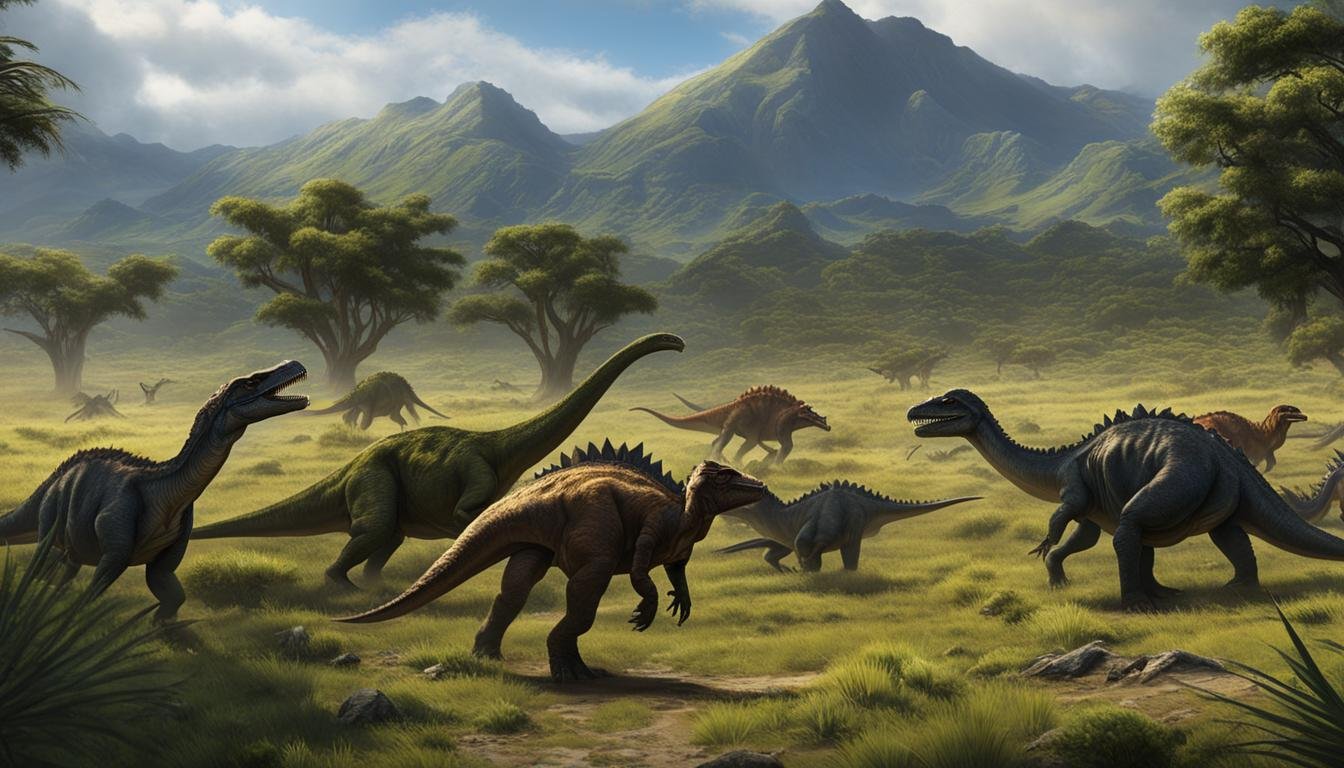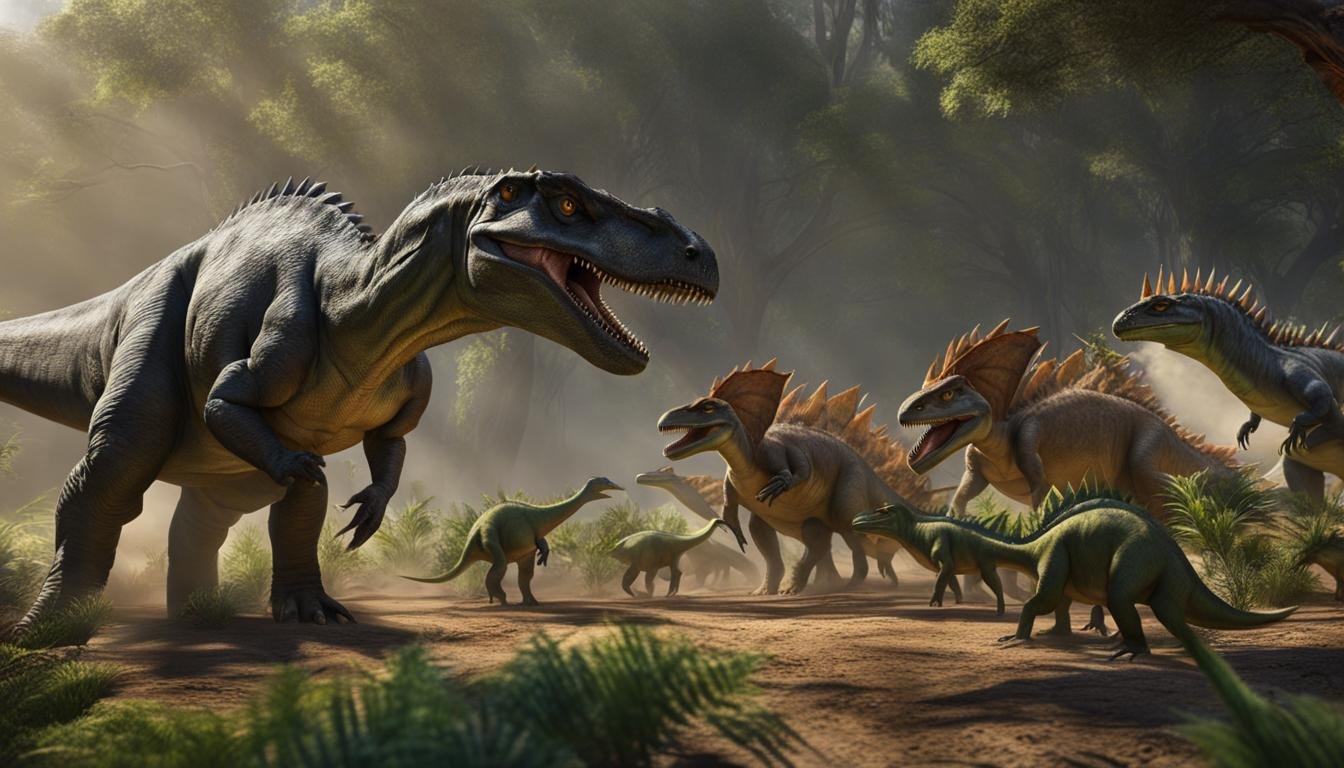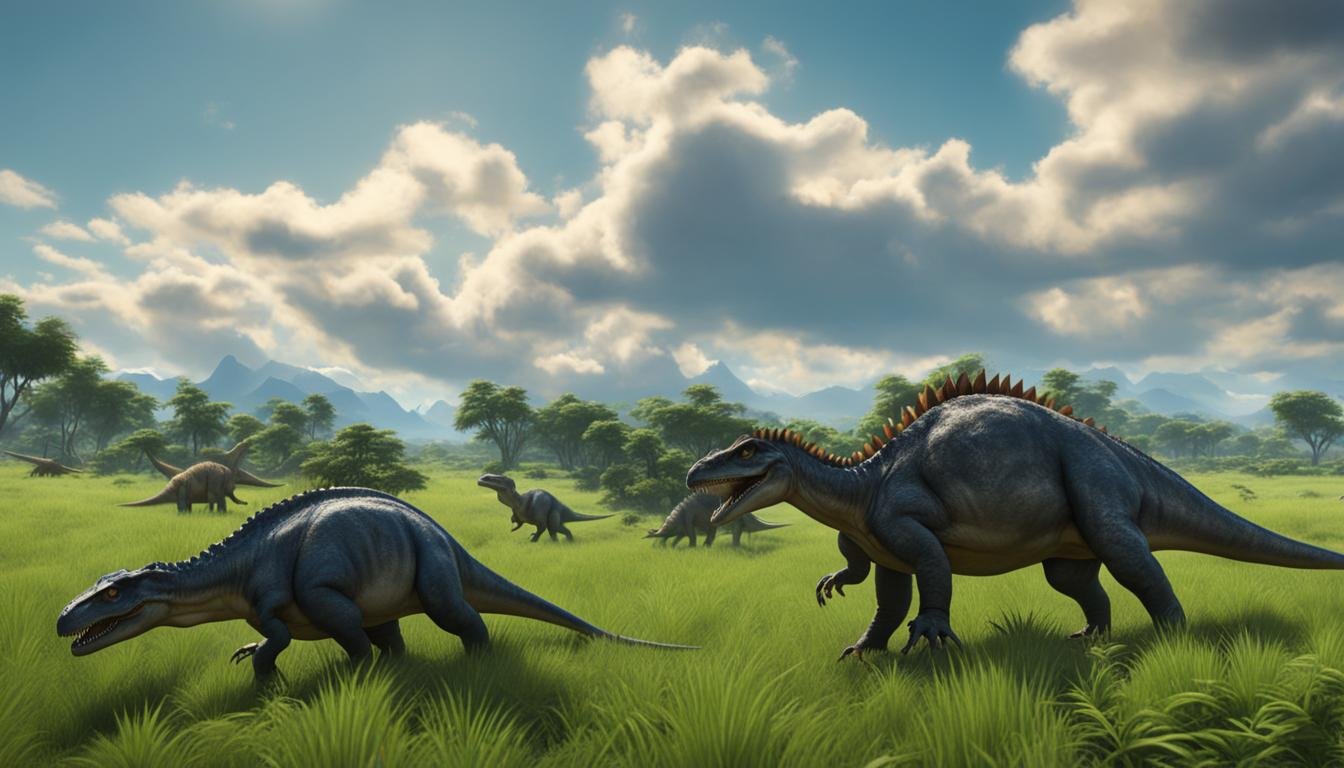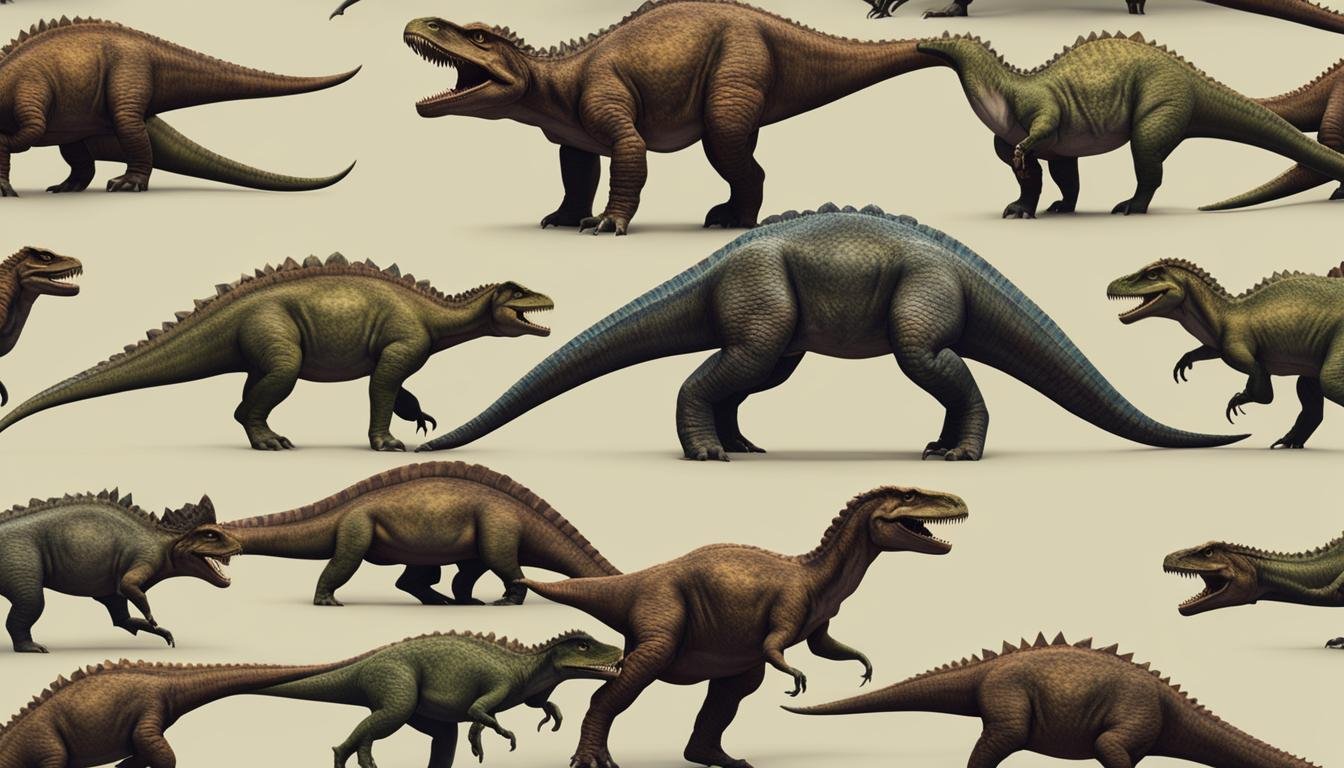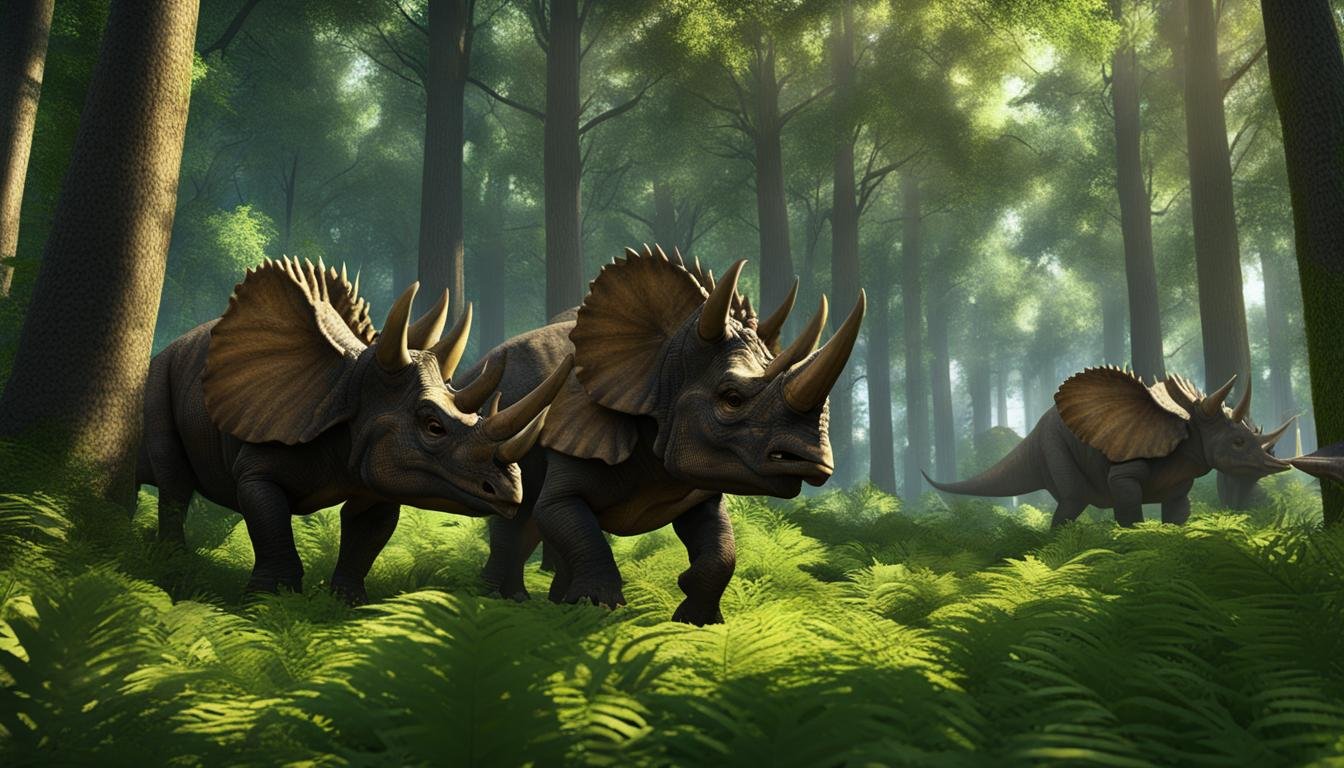Welcome to our exploration of dinosaur migration patterns and reasons. Dinosaurs, the majestic creatures that once roamed the Earth, had fascinating migration behaviors that shaped their distribution across continents. In this article, we will delve into the research and theories surrounding dinosaur migration, shedding light on their movement patterns and the factors that influenced their journeys.
| Main Point | Description |
|---|---|
| Continental Migration Routes | Dinosaurs utilized the connected landmasses of Pangea as routes for intercontinental migration. |
| Network Theory in Paleontology | The use of network theory enables paleontologists to effectively map dinosaur migration and analyze their behavioral patterns. |
| Mobility Among Dinosaur Groups | Different dinosaur groups displayed varying levels of mobility, with sauropodomorphs being generally less mobile compared to the more agile theropods. |
| Role of Land Bridges and Continental Shifts | Temporary land bridges and the movement of continental plates significantly impacted the migration routes of dinosaurs. |
| Environmental Factors Influencing Migration | Factors like CO2 levels and the fragmentation of continents are believed to have played a crucial role in shaping the migration patterns of dinosaurs. |
Mapping Dinosaur Migration
Researchers have been using network theory to gain insights into the complex patterns of dinosaur migration. By connecting continents based on the presence of similar dinosaur fossils, they have been able to map out the routes these prehistoric creatures took. The break up of Pangea and the shifting of continents during the Triassic and Cretaceous periods played a significant role in shaping the migration patterns of dinosaurs.
The study focused on three main groups of dinosaurs: sauropodomorphs, theropods, and ornithischians. Sauropodomorphs, known for their long necks and tails, were generally less mobile compared to theropods and ornithischians. However, birds, a type of theropod, were more likely to disperse across narrow sea ways, showcasing their ability to navigate different environments.
Mapping dinosaur migration provides valuable insights into their behavior and helps us understand how these ancient creatures adapted to the changing landscape of the Earth. By studying their migration patterns and behavior, scientists can uncover clues about factors such as environmental conditions, food availability, and the influence of continental fragmentation on their movement.
| Dinosaur Group | Main Characteristics | Mobility | Migratory Behavior |
|---|---|---|---|
| Sauropodomorphs | Long necks and tails | Less mobile | Migrated between continents using temporary land bridges |
| Theropods (including birds) | Carnivorous, bipedal | More mobile | Dispersed across narrow sea ways |
| Ornithischians | Herbivorous, quadrupedal | Varied mobility | Migrated between continents using land bridges and other means |
“Mapping dinosaur migration allows us to visualize the incredible journeys these ancient creatures undertook. It’s like reconstructing a prehistoric puzzle, piecing together the paths they traveled and the environments they encountered along the way.” – Dr. Sarah Grant, Paleontologist
Factors Influencing Dinosaur Migration
Scientists have been fascinated by the reasons behind dinosaur migration for decades. Although numerous theories have been proposed, the true driving factors behind these ancient journeys are still a subject of ongoing debate. Exploring these theories can provide valuable insights into the behaviors and adaptations of dinosaurs.
One theory suggests that the isolation of Europe during the Mesozoic Era played a significant role in the evolution and subsequent migration of new dinosaur groups. As Europe reconnected with other continents, these dinosaurs expanded their geographic ranges, taking advantage of the newly available habitats. This theory highlights the influence of continental fragmentation on dinosaur migration patterns.
Another theory proposes that the patchy distribution of fossil records is a key factor driving dinosaur migration. Europe, with its extensive fossil record, may have served as a hub for dinosaur diversity, leading to migrations to other areas. This theory suggests that the availability of suitable habitats and resources, as evidenced by the fossil record, influenced the movement of dinosaurs over vast distances.
Theories regarding dinosaur migration:
- Europe’s isolation and subsequent reconnection as a driving force for the evolution and expansion of new dinosaur groups.
- The patchy distribution of fossil records, with Europe playing a central role in dinosaur diversity and influencing migrations.
While these theories provide plausible explanations, further research is needed to gain a deeper understanding of the factors influencing dinosaur migration. Studying migration patterns and their relation to environmental changes, such as climate and habitat availability, can shed more light on the underlying mechanisms behind these ancient journeys.
| Migratory Theory | Evidence |
|---|---|
| Europe as a hub for dinosaur diversity | Extensive fossil record in Europe compared to other areas |
| Continental fragmentation | Isolation and subsequent reconnection of continents as a driving force |
Dinosaur Migration and CO2 Levels
Recent research suggests that the migration of dinosaurs from South America to Greenland may have been influenced by major shifts in atmospheric CO2 levels during the Triassic period. A study conducted by paleontologists analyzed ancient magnetism patterns in rock layers to determine the timing and mechanism of this migration. The findings indicate that high CO2 levels may have restricted the movements of sauropodomorphs, a group of dinosaurs, while a decrease in CO2 levels may have removed climatic barriers, allowing them to expand into Greenland.
This study provides valuable insights into the relationship between dinosaur migration patterns and environmental factors such as CO2 levels. It highlights the potential impact of climatic conditions on the dispersal and geographic range of dinosaurs. By examining the fossil record and analyzing geological data, scientists are able to piece together the complex puzzle of dinosaur migration and gain a better understanding of the reasons behind their movements.
While more research is needed to fully comprehend the extent of CO2’s influence on dinosaur migration, this study opens up new avenues for exploration. Understanding the role of CO2 levels in shaping dinosaur migration patterns can help scientists reconstruct the dynamics of prehistoric ecosystems and shed light on the evolutionary history of these magnificent creatures.
| Dinosaur Migration and CO2 Levels | Findings |
|---|---|
| CO2 levels during the Triassic period | High CO2 levels may have restricted the movements of sauropodomorphs |
| Migration of dinosaurs to Greenland | Decrease in CO2 levels may have removed climatic barriers, allowing for expansion into Greenland |
| Impact of CO2 levels on dinosaur migration | CO2 levels may have played a role in shaping dinosaur migration patterns and dispersal |
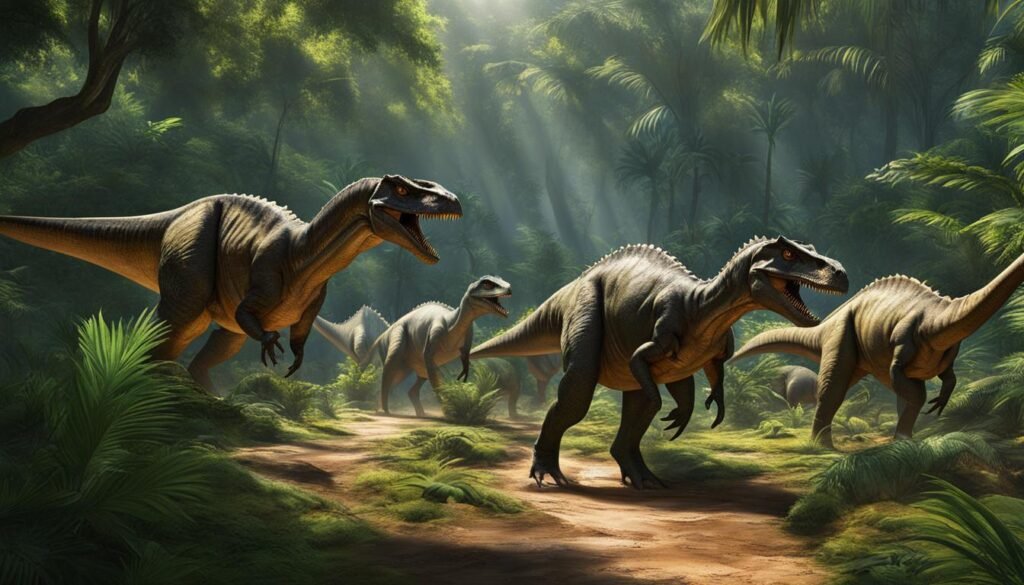
The migration of dinosaurs and its connection to CO2 levels is a fascinating area of study that continues to uncover new insights into the ancient world. By unraveling the complexities of dinosaur migration, scientists are able to piece together the puzzle of these magnificent creatures’ behavior, adaptations, and the ever-changing landscape they inhabited.
The Migration of European Dinosaurs
Fossil records provide evidence of the migration of dinosaurs from Europe to other parts of the world during the early Cretaceous period. These findings have shed light on the movement patterns and behavior of these prehistoric creatures. Using network theory, scientists have uncovered a large-scale migration out of Europe after the continents began to split apart.
Europe’s isolation and subsequent reconnection with other landmasses played a significant role in the migration of dinosaurs. The expansion of new dinosaur groups and the evolution of existing ones contributed to their geographic range expanding beyond Europe. This migration continued until the end of the Cretaceous era, coinciding with the extinction of the dinosaurs.
The exact mechanisms by which dinosaurs left Europe are still under investigation. It is believed that temporary land bridges formed by tectonic activity could have facilitated their movement between different continents. Additionally, swimming may have been another mode of travel, as dinosaurs were capable of swimming, similar to modern-day elephants. However, further research is necessary to definitively understand the modes of travel utilized by dinosaurs during their migration.
| Migration Patterns | Migration Reasons |
|---|---|
| Large-scale migration out of Europe | Expansion of geographic range |
| Continued until the end of the Cretaceous era | Reconnection with other landmasses |
| Diversification and spread of dinosaurs | Evolution of new dinosaur groups |
The migration of dinosaurs from Europe provides valuable insights into their behavior and the changing landscape of the Earth during the Mesozoic Era. As scientists continue to study and uncover more evidence, a clearer picture of the reasons and mechanisms behind dinosaur migration will emerge.
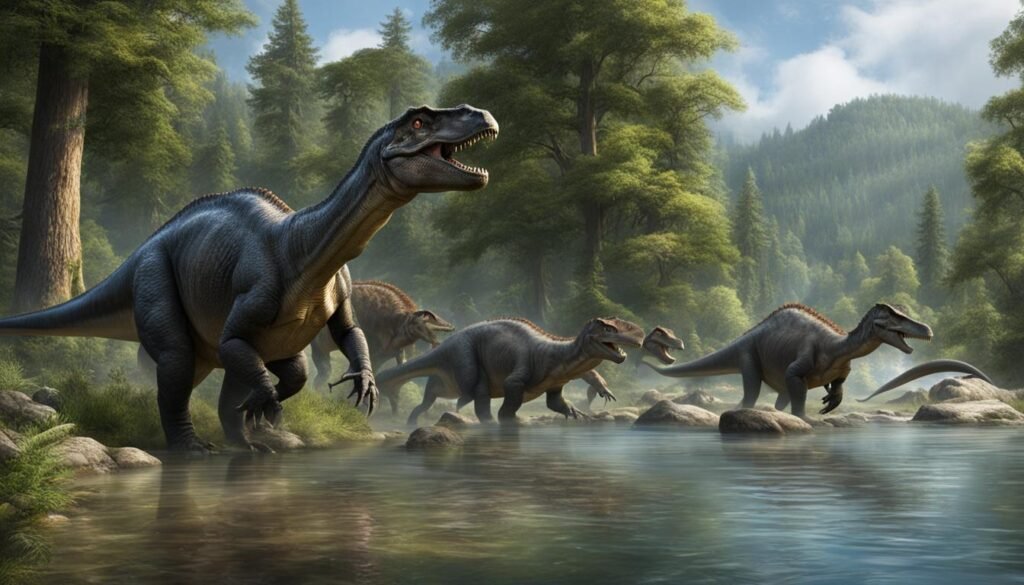
Possible Modes of Dinosaur Travel
Dinosaurs, despite their massive size, were capable of long-distance travel. The migration of dinosaurs from Europe to other parts of the world may have been facilitated by various modes of transportation.
Land Bridges
One possible mode of travel for dinosaurs was the presence of temporary land bridges. These land bridges were formed by tectonic activity, connecting different regions. For example, Indo-Madagascar may have been connected to Australia via a land bridge, allowing dinosaurs to migrate between these areas. The availability of these land bridges could have significantly influenced the routes and patterns of dinosaur migration.
Swimming
Interestingly, dinosaurs were also capable of swimming. Similar to modern-day elephants, dinosaurs may have taken to the water to traverse large bodies of water. This mode of travel opens up the possibility that dinosaurs could have migrated across oceans or lakes, expanding their range to new territories.
While these are plausible theories, it is important to note that the exact modes of travel for dinosaurs remain speculative. Further research, including the analysis of fossil records and geological data, is necessary to gain a better understanding of how dinosaurs moved across different continents.
| Mode of Travel | Description |
|---|---|
| Land Bridges | Temporary connections formed by tectonic activity that facilitated dinosaur migration between regions. |
| Swimming | Dinosaurs, like modern-day elephants, may have been capable of swimming and using bodies of water as migration routes. |
Understanding the possible modes of dinosaur travel is crucial in piecing together their migration patterns and the factors that influenced their movement. By unraveling the mysteries of dinosaur migration, scientists can gain valuable insights into how these ancient creatures adapted to changes in their environment and expanded their territories.
Conclusion
The study of dinosaur migration patterns provides fascinating insights into the behavior of these ancient creatures and the ever-changing landscape of the Earth during the Mesozoic Era. By mapping their movements and considering various factors, scientists can begin to unravel the reasons and mechanisms behind dinosaur migration.
Through the use of network theory and the analysis of fossil records, researchers have been able to trace the paths and patterns of dinosaur migration across continents. They have discovered that sauropodomorphs, with their less mobile nature, tended to migrate differently from their theropod counterparts.
Factors such as the break up of supercontinent Pangea, the shifting of continents, and changes in atmospheric CO2 levels may have influenced dinosaur migration patterns. Temporary land bridges formed by tectonic activity and the ability of dinosaurs to swim are speculated to have facilitated their travel across different regions.
Despite these advancements, the fossil record remains incomplete, leaving gaps in our understanding of dinosaur migration. Further research is necessary to fully grasp the complexities of their movements and to uncover additional reasons behind their migrations.

